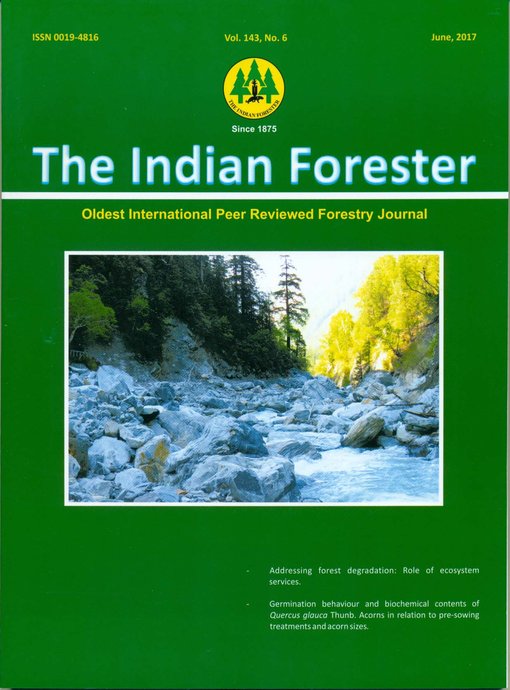Seed Bank Estimation and Regeneration Studies of Madhuca neriifolia (Moon) H.J. Lam., from Western Ghats of Karnataka
DOI:
https://doi.org/10.36808/if/2017/v143i6/115846Keywords:
Seed Bank, In-situ Regeneration, Ex-situ Regeneration, Conservation.Abstract
Studies on the seed dispersal, regeneration by both in-situ and ex-situ are crucial for the management of genetic diversity of threatened species. The seed bank estimation was assessed on an endangered species Madhuca neriifolia from three different locations of Western Ghats using two factorial completely randomized design. The seeds are dispersed by anemochory, hydrochory and mammalochory. The natural seed bank estimation revealed the seed densities among the forest ranges and distances are significant. The in-situ regeneration among the forest ranges and the distances were insignificant. The mean percentage of ex-situ regeneration was remained insignificant among the forest ranges and the seeds collected from the different distances. The high mean percentageof ex-situ regeneration suggests it as a best suitable method to conserve this endangered species.References
Awasthi Y.C., Bhatnagar S.C. and MitraC.R. (1975). Chemurgy of sapotaceous plants: Madhuca species of India. Economic Botany, 29(4): 380-389.
Cain M.L., Milligan B.G. and Strand A.E. (2000). Long-distance seed dispersal in plant populations. American J. Botany, 87(9): 1217-1227.
Jacquemyn H., Van Looy K., Breyne P. and Honnay O. (2010). The Meuse river as a corridor for range expansion of the exotic plant species Sisymbrium austriacum: evidence for long-distance seed dispersal. Biological Invasions, 12(3): 553-561.
Jones F. A. and Muller-Landau H.C. (2008). Measuring long-distance seed dispersal in complex natural environments: an evaluation and integration of classical and genetic methods. Journal of Ecology, 96(4): 642-652.
Khare C.P. (2007). Indian Medicinal Plants. New Delhi, India: Springer Science.
Kumar C.N.P., Shivaprasad D., Somashekar R.K. and Nagaraja B.C. (2013). Reproductive phenology and pollination biology of Madhuca neriifolia(Moon) H.J. Lam in wet evergreen forest of Western Ghats, South India. Inter.J. Advanced Research, 1(9): 296-306.
Kuuluvainen T. and Kalmari R. (2003). Regeneration microsites of Picea abies seedling in a windthrow area of boreal old-growth forests in Southern Finland Ann. Bot. Fennici, 40: 401-413.
Levey D.J., Tewksbury J.J. and Bolker B.M. (2008). Modelling long-distance seed dispersal in heterogeneous landscapes. J. Ecology, 96(4): 599-608.
O'Farrill G., Chapman C.A. and Gonzalez A. (2011). Origin and deposition sites influence seed germination and seedling survival of Manilkara zapota: implications for long-distance, animal-mediated seed dispersal. Seed Science Research, 21(4): 305-313.
Soons M.B. and Ozinga W.A. (2005). How important is long-distance seed dispersal for the regional survival of plant species? Diversity and Distributions, 11(2): 165-172.
Thomson F.J., Moles A.T., Auld T.D. and Kingsford R.T. (2011). Seed dispersal distance is more strongly correlated with plant height than with seed mass. J. Ecology, 99(6): 1299-1307.
Ved D.K. and Goraya G.S. (2010). Diversity of Herbal Raw Drugs and Plant Species in Trade. Medplant, 2(1): June-March
Downloads
Downloads
How to Cite
Issue
Section
License
Unless otherwise stated, copyright or similar rights in all materials presented on the site, including graphical images, are owned by Indian Forester.





